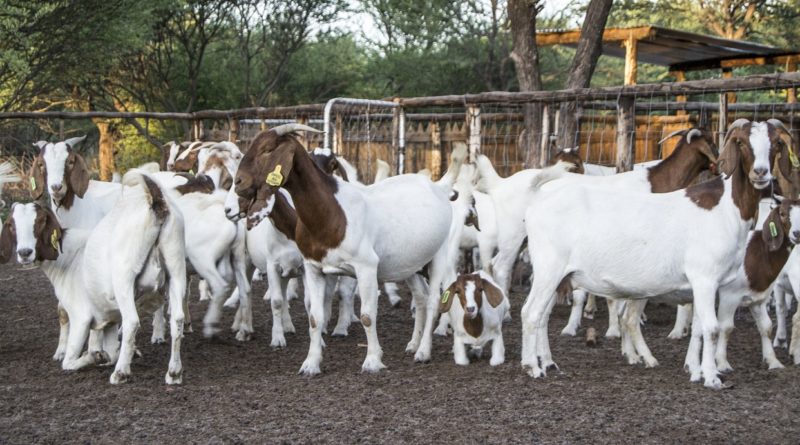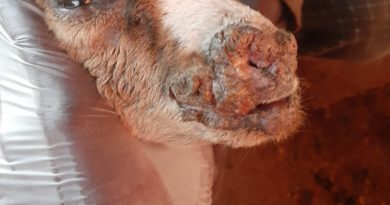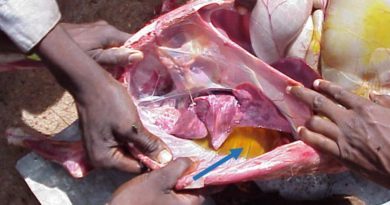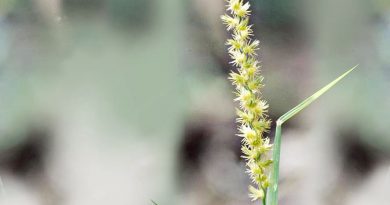Farming with Goats in Botswana
Many a farmer will tell you upon inquiry that there is no strict formula to successfully farming goats in Botswana. Or, indeed, anywhere in the world. Best practices, yes. Top tips, certainly. These are things that can be learned, and nuances that can be shared. What remains difficult to instill in someone that isn’t naturally drawn to the practice, however, is passion. A genuine, fervent passion for what you are doing and the proverbial as well as returns that this brings.
Fortunately, farming in Botswana is not simply a matter of livelihood – with agriculture (livestock and crop farming) accounting for over 3% of the nation’s Gross Domestic Product (GDP). This figure does not, of course, account for the number of “weekend farmers” and families who do not farm for commercial purpose, and rather enjoying time at the “moraka” as their own. So, what is it that we can learn from farming goats successfully in Botswana, aside from the need to truly put your heart and soul into it? Here, we delve a little into the local small stock farming community’s view.
Grazing and Vegetation
Remember, goats are ruminant animals, meaning that they have a multi-chambered stomach. They are born “browsers” and actually prefer feeding on leaves, weeds, briars, and other plants to grazing only on grasses. Typically, goats that browse have less problems with internal parasites. However, most goats will need nutritional supplements in addition to forage, including lucern, pasture, hay and concentrates. This becomes even more important for young kids, who do not get enough sustenance on their own. Ensuring your goats are well fed is paramount – nobody wants a scrawny looking animal, and poor nutrition can affect everything from growth to how shiny their coat is. Goats may also be fed grain (to be introduced slowly), and many breeders often use DCP licks and / or lick blocks (phosphate blocks & mineral blocks) to supplement goats as well. This practice is encouraged.
Felicity Julia Hunter, a Nutritional specialist at Techno Feeds in Gaborone says, ‘’ It is important to supplement though out the year for optimal health of your animals. Healthy animals react better to vaccinations and de-worming. Good genetics will not reach their full potential unless the animals are correctly supplemented. ‘’
Nutritional requirements of goats can vary depending on life stage, activity level, pregnancy, lactation and breed. Increased production demands will also cause an increase in nutritional demands. Generally, your goats will eat 3-4% of their body weight in feed. Of this, at least 1% should be good quality roughage.
“I’ve said it many times before that you have to supplement your pregnant goats in Botswana during winter. They conceive during autumn when there is a lot of food and normally have more than one baby inside as a result of that. As the babies grow inside, the food also gets less nutritious and scarce due to winter,” advises local farmer, Theunis van Rensburg.
Also consider that meat production goats have different nutritional needs than milk production goats. Lastly, care should be taken to avoid feeding goats too much. Obese animals have lower reproduction rates and are more subject to arthritis.
Breeders in country need to understand that Botswana is a semi-desert, with large parts of the country having very sandy soils. The soils are very low in minerals and, as a result, the grass has reduced levels of phosphate. In the desert (primarily the Kweneng, Kalahari and Ghanzi districts), the grass also has a very short growing season. Green grass is only available for a limited period as rain in the country is very unpredictable. Green grass and shrubs offer energy, proteins, vitamin A and phosphate to the animal. Taking these factors into consideration, supplementing your goats with additional phosphate, along with additional vitamins and minerals is good idea.
Phosphate is important for the animal for healthy and strong bones. It is also important for energy, general health and the nervous system. Phosphate supplements are, in fact, especially important for your pregnant does towards the latter part of their pregnancy. A shortage of phosphate can have a disastrous effect on the fertility and growth of an animal. This can be disastrous to your goat breeding operation.
Breeding and Doe Maternity Care
Knowing when is the best time to ensure your goats breed is a careful art. To ensure that your doe becomes pregnant, let the buck mate her two or three times per session. If she doesn’t come back into heat, you can presume the mating was successful. The heat cycle lasts from a few hours to a few days, and the doe normally goes onto heat every 18-21 days. One way to tell if a doe is in heat is vigorous tail-wagging, and the fact that she may make more noise than usual — from short bleats to longer calls. If a doe in heat can see the bucks, she will parade back and forth in his view and rub on the fence more than usual. These are just some of the observable signs a doe is in heat. Make sure to capitalize on this time.
Correspondingly, during “rut” – when the buck is ready to mate – he will think of nothing else but this. A buck in rut urinates into his mouth, as well as onto his chest, face, and beard. The resultant smell attracts does and brings them into heat. In addition, bucks blubber, grunt, and snort, and have the ability to mate up to 20 times per day. Though they can mate all year round, it is best to work with specific breeding seasons, with a clear management cycle to plan for weaning, vaccinating, de-worming, feed management and availability of goats to market and sell in larger lots.
If does get enough food, they can breed as early as six months of age. However, you should not let them mate this young, as it can slow their growth and they might have trouble breeding again. Mate them only when they have reached two-thirds of the average body weight of the adult doe (ewe) in the herd. This is normally around 45kg. It is advisable to put the ram to the does (ewes) for 42+ days. The doe (ewe) comes into heat every 18-21 days, so 42+ days will give each doe (ewe) two chances to conceive. Ensure that you do not leave the ram with the ewes for longer than this as he will become exhausted and unproductive. Also, try to plan for your kids not to be born in the middle of winter.
Take extremely good care of your pregnant does. I cannot emphasize this point enough! Good care of the kids actually starts before they are born! In other words, you need to look after their mother (the doe is the ‘factory’ that produces for you – and you need to look after her very well). So, let’s start with her. Take note that correct feeding and nutritional regimens for your females during late pregnancy are vitally important as your doe must gain 7 – 9kg during the last six weeks of pregnancy. If they don’t eat properly at this stage, the kids will be born small and weak, and the does will not have enough milk for them. This in turns negatively impacts on mortality.
Giepie Calldo, the technical Manager of CMW in South Africa says ”The success of any reproduction and production system starts six weeks prior to lambing (kidding), during which 72% of foetus growth, udder tissue development and primary wool follicle (for sheep) takes place until birth.”
Plan your production breeding season well and take advantage of the market demands and increases in the price of slaughter animals due to seasonal fluctuations such as religious festivals, holiday periods and seasons of the year. For example, Christmas and the Islamic “Qurbani.” Demand for goat meat is higher at such times, so ensure that you plan to have stock to sell for these periods and market your animals.
Vaccination
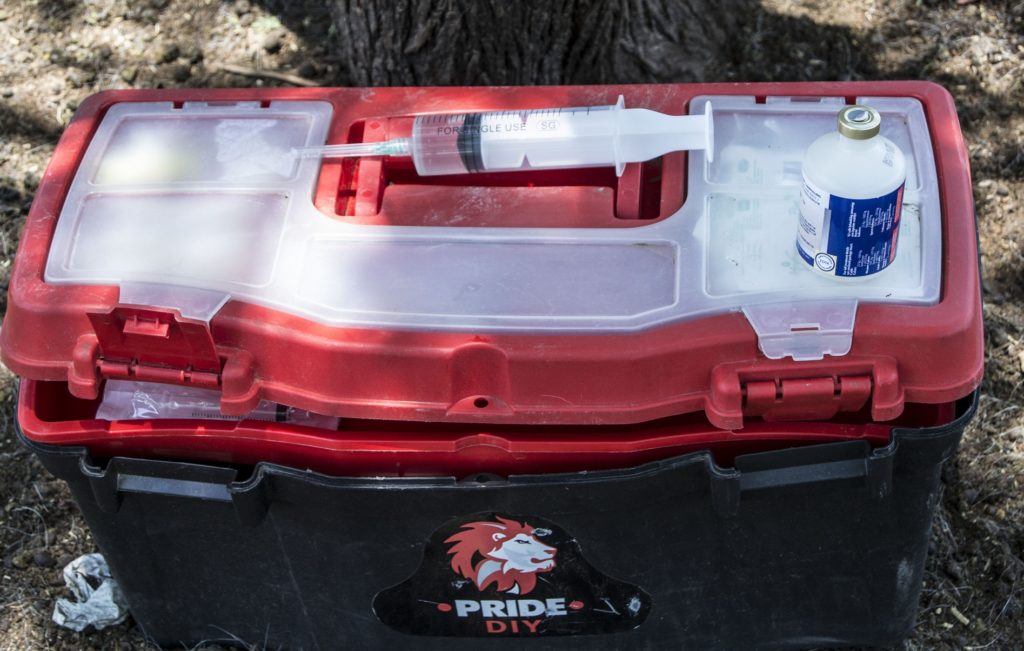
Knowing when it is best to vaccinate goats is key and how effective or non-effective can be. As Specialist Veterinarian, Dr. Grant van Lelyveldt in South Africa shares, ”It is important to be aware that no vaccine is 100% effective. It is realistically 70-80% effective and the shortfall can be reduced through proper supportive management. ”It is important immunize the animals that are healthy and in the correct body condition, as well as at times that the animal is at low risk from illness or stress.’’ How you vaccinate, and when, also depends on what you are vaccinating for. Ensure that you adhere to the recommended dosages as per the products instructions and also ensure proper hygiene and storage precautions are taken with regards to the vaccines.
Says Dr. Michael Sento of Vet & Agric Clinic in Gaborone, ‘’Remember that the best result in treating a condition (on your animals) depends on getting the right medicine, using the right dose, giving it at the right interval and using the right method of administering it.’’
In addition, keeping the drug at the right temperature, and using clean & sterile instruments are essential. If you satisfy all these, then you will have a stronger medicine at your disposal”
The primary vaccinations for goats in Botswana are those for Pulpy Kidney (perhaps the single most important cause of deaths in small stock in Southern Africa) and Pasturella. These are usually administered biannually, typically at season change i.e. April and September. ”Immunization (vaccination) is like insurance – you take precautions and prevent the most severe diseases, or you save money initially by not immunizing and take the knock later when diseases such as blue tongue, pulpy kidney, rift valley fever and many more strike’’ shared Danie van Niekerk of Virbac SA.
Farmers in Botswana should know that Prussic Acid poisoning is one of the most common causes of death of small stock in the country and is often mistaken to be Pasturella. There is no vaccination against this ailment, but Prussic acid poisoning in very preventable by giving your livestock additional sulfur containing formulated supplements.
Also worth being wary of in Botswana, is heart water, an ailment that animals are prone to throughout the eastern side of the country. Lastly, remember that it is important to have a hands-on approach and actively manage administering vaccinations yourself or have these done in your presence to ensure they are done correctly.
Regular Health Checks
It is advisable to use a preventative health programme planned in consultation with a veterinarian for the animals on your farm. This includes but is not limited to: the immunizations to be administered and at what times these should be done, control of internal and external parasites, vitamin, and mineral supplements. Vets typically are always willing to help and advice, welcoming contact for even simple inquiries. They are experts in the field – make use of them to the fullest. In fact, you should have your vet’s number on speed dial!
Botswana has over 145 veterinary surgeons registered to practice and there is a vet in every single district in country – we should make the most of their expert services! We can learn a lot by working with and chatting to our vets.
Drought
Botswana suffers from cyclical drought something farmers in the country need to be very clued up on. This means understanding our climate and how agriculture works within it, as well as what means exist to ensure we work within this climate rather than allowing it to defeat us. Farming smartly is therefore vital. As the President of the Republic of Botswana, and a passionate farmer, His Excellency Mokgweetsi E. K. Masisi, once said, ”The biggest challenge to agriculture in Botswana is drought, which we have to learn to plan around, instead of using it as an excuse to explain the decline in the productivity of the sector. We need to embrace smart agriculture…” There is a great deal of support to be found from Government and non-Governmental associations and even individual farmers to advice on how to manage drought and stull thrive with your livestock.
The Business of Farming
Some forget the administrative aspect of farming, whether commercial or not, and this is a big mistake. In this vein, keeping records is important. For example, record the mothers, the sires, dates of vaccinations, weaning, illnesses, treatments used, etc. According to Hugh Nivison, a Breeding Specialist (South Africa), ”The future of breeding must involve measuring and recording animals and collecting their breeding values on a large scale. It is, and has been for a while, no longer good enough to try and win prizes in the show-ring. You have to measure your animals and see what their performance is. The future of animal breeding depends on it.”
Nivison speaks further to the business managerial aspect of farming, nothing that, “Farming is a business, and farmers should use lambing (kidding) pens (or maternity kraals) for economic considerations. Lambing pens offer numerous advantages, allowing the farmer to farm with precision.” Lambing pens simplify record keeping, which accelerates breeding progress. You can easily supervise and identify problem ewes during lambing.”
Good Infrastructure
It is important to invest in good infrastructure, so make sure do it right the first time. This does not mean just cost, for cheap material can still be put to use correctly and well. On any livestock farm the most important chores are performed in the kraal. Well-equipped kraals and pens are therefore worth your while. Building proper handling facilities can be costly, but several farmers who have done so, will tell you how much easier this has made their work. Invest wisely!
When it comes to kraals, ensure you have a good roofing structure. Goats hate to get wet and need protection from the cold. Also ensure that you keep your kraals clean, dry and draft-free at all times! Regularly cleaning aids in disease and parasite reduction.
Plan and Plan Well
It is well worth remembering that farm management plans have to be in specific accordance with your farm set up and needs. It is not given that what works at my farm will work at your farm, for instance. There are a number of factors to consider. My advice is to get a professional who can come in and assess one’s farm and draw a customized plan for you. You can benchmark from other farms, but in the end, your farm needs must be specifically incorporated. Most important is that you ensure the set-up is sustainable. You need to be able to maintain it, both in terms of finances and in terms of the human resources at your disposal.
Staffing
Sufficiently skilled farm workers are always a challenge in Botswana, as we tend to see high turnover of staff. For this reason, careful hiring and focused training is vital. Impart relevant and value-adding knowledge so your staff understand what they are doing and why they are doing it. Be patient, and consider an incentive scheme to keep them motivated to work well. After all, they are the ones caring for your precious livestock when you are not on the farm.
It is important to encourage staff on the farm and to ensure that they also have an interest in the farm’s success. In this way, they enjoy their work and we are assured of their loyalty. Indeed, even if you have the best staff on your farm, try not to stay away for long periods at a time. Regular visits are key, especially for part time or “remote control” farmers. One needs to always know and see what is going on at the farm and with the goats.
Education and Support
Botswana remains a special case in the extent to which Government and neighboring countries’ farming associations provide support to local farmers. Beyond Government feed programs and subsidizing platforms. Neighboring South Africa offers a number of junior goat courses as well as senior goat courses that can help farmers. A growing network of local, established farmers also cannot go without mention, providing insight and experience for others to learn from. This is especially so with the growing number of Kalahari Red goat breeders in Botswana.
In addition, local veterinary offices are always willing to help, and local agriculture days and shows continue to be held in high regard. This is on top of the renowned National Agriculture Show held in August every year, which brings together key farmers, suppliers and other stakeholders in the industry. Platforms such as the Mookane Farmer’s Day and talks and short courses at BUAN are all very good for both young as well as seasoned farmers.
Do it with passion, or not at all
As we shared at the start of this article, passion is paramount, and a goat breeder or farmer needs to be wholly invested in making sure their animals thrive from birth to show day. “The first six months of the kid’s life is the most important stage, because it determines how the animal will perform. At that stage, a producer should do his utmost to do everything right,” shares farmer Jordi van Hasselt.
The greatest thing about farming in Botswana? Beyond the sheer amount of opportunity to do it and do it well, whether recreationally or commercially, there’s a wealth of learning, sharing and support. And, of course, it is only with time and engaging fellow farmers and those “in the know” that you really, truly get into it.
This article was first published by FAHEEM KALA in 2018.
If you need more information on this article contact Faheem: bushra.stud@gmail.com
